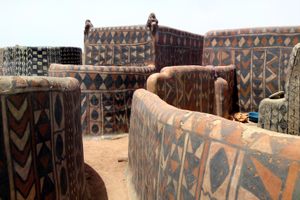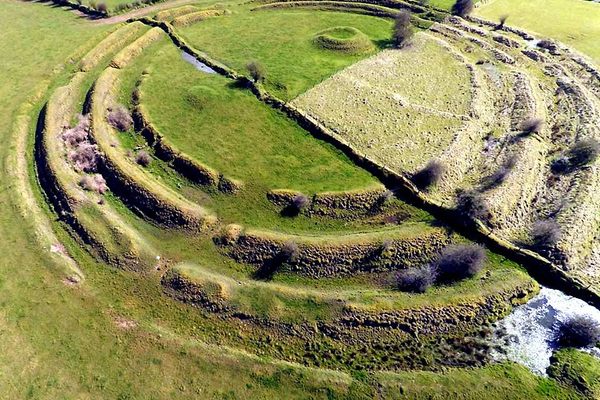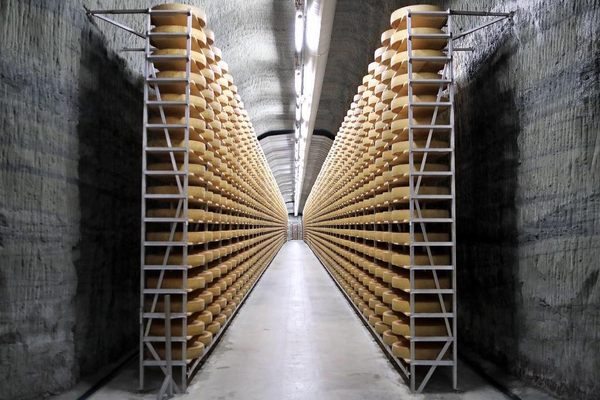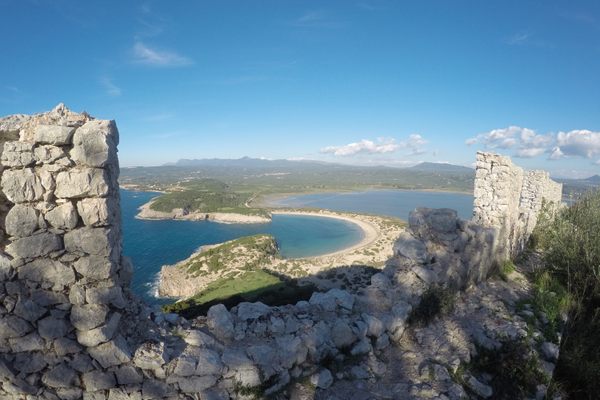About
The Moba people in north Togo lived off the land in the Savanes region. During the 18th and 19th centuries, a neighboring ethnic group, the Tchokossi, would attack the Moba and kidnap their people to trade to European slave traders for guns and horses.
The Moba took to the precarious cliffs of the area to build defensive dwellings hidden in the red rocks. Lookouts would use fire signals or the sound of cow horns to alert others that the Tchokossi were coming. They would then climb down overhanging vines to caves hidden beneath the cliffs.
Within the cracks of the rock face, a mini fortress grew from large cylindrical structures filled with handmade clay jars to store grains and livestock. Nearby, springs brought water that was treated with local plants, making it possible to hide for days.
The Moba used offensive tactics as well. Young warriors would attack with arrows poisoned from the same local plant used to treat the water. Legend holds that other warriors would lure the Tchokossi to their doom on the cliffs. As the Tchokossi chased the warriors on their horses, the warriors would run in the direction of the edge of the cliffs and quickly dive into nearby cracks in the rocks and the Tchokossi, unable to stop their horses quick enough, would fly right off the edge.
Nok translated in Moba means “hidden” which still describes this incredible site where visitors can explore and interact with the rich, somewhat unknown history of the ethnic groups of northern Togo. Declared a UNESCO World Heritage Site in 2000, the Nok Caves still exist today accessible by a metal ladder constructed for tourists.
The structures continue to extend right out of the narrow rocks. Though most of the area was looted, arrows and quivers can still be seen amongst the broken pottery. Over 150 jars are still intact which were used to store millet and sorghum. In the middle of the area is a long, angled rock where the leaders would sit to weave tales of the bravery of their people in evading slave traders.
Related Tags
Know Before You Go
The caves can be accessed through the village Nagou where visitors can try the locally brewed alcoholic drink, Tchokpa. Though travelers can take a road to the plateau, it is also possible to climb up the rock face to achieve an intimate engagement with the landscape. The start of the trail is marked by a water tower near the village of Djabire at the base of the mountain.
Community Contributors
Added By
Published
August 31, 2017
Sources
- http://whc.unesco.org/fr/listesindicatives/1504/
- http://kuncityhk13.blogspot.com/2013/08/les-greniers-des-grottes-de-nok-et-de.html
- https://en.wikipedia.org/wiki/Nok_and_Mamproug_Cave_Dwellings
- https://www.revolvy.com/main/index.php?s=Nok%20and%20Mamproug%20Cave%20Dwellings
- http://worldheritagetentativelist.blogspot.com/2012/10/togo-grotto-caves-of-nok-and-mamproug.html
- http://wanderlust15.com/africa/10-places-visit-togo/3/

































